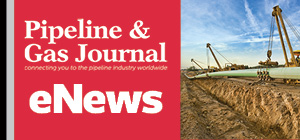Iraq Employs Drones To Monitor Oil Pipelines

The Iraqi government announced plans to use drones to monitor and protect its export and production pipelines in the first quarter of next year. Reuters reported on Monday that Oil Minister Jabbar al-Luiebi is looking for professional security companies that can supply Iraq with drones.
The Iraqi government is concerned about the security of its oil facilities. The bulk of Iraq’s exports move through a handful of terminals on Iraq’s narrow Persian Gulf coast, making its exports vulnerable to attack from other countries or militant groups.
Iraqi authorities said that the drones will allow Iraq’s military to keep a continuous watch over its oil terminals within Iraqi territorial waters of the Persian Gulf. The idea of using drones is not exactly new one. Back in 2012, Iraq said it would use unmanned drones to help protect its southern oil platforms, following the withdrawal of the American troops.
However, in May this year, media reported that the U.S. has agreed to sell a dozen or so of the U.S. Navy’s Scan Eagle unmanned drones to Iraq’s navy as part of an effort to help protect the nation’s oil exports amid growing tensions in the Persian Gulf.
Back in May, U.S. Office of Security Cooperation-Iraq, which operates out of the U.S. Embassy and manages U.S. military sales programs in Iraq, confirmed the sale of the drones.
Iraq is also hoping to balance international concerns about Iran’s threats to cut off oil shipments to some European countries that import Iranian oil. Iraq said it is not worried about whether Iran views Iraq’s progress as a threat.
For the first six month of 2017, Iraq has boosted oil production to 3 million barrels per day, up from about 2.5 million before the invasion. However, the country’s output fell last month by 120,000 barrels a day—the most since January—as the central government clashed with the Kurds, according to data compiled by Bloomberg. That meant Iraq pumped 4.35 million barrels a day in October
Drones entered in the oil industry a decade ago, when the US Federal Aviation Administration (FAA) gave the British BP the first authorization to use them in its oil fields in Alaska, where human presence is very scarce.
Related News
Related News

- Kinder Morgan Proposes 290-Mile Gas Pipeline Expansion Spanning Three States
- Three Killed, Two Injured in Accident at LNG Construction Site in Texas
- Tallgrass to Build New Permian-to-Rockies Pipeline, Targets 2028 Startup with 2.4 Bcf Capacity
- TC Energy Approves $900 Million Northwoods Pipeline Expansion for U.S. Midwest
- U.S. Moves to Block Enterprise Products’ Exports to China Over Security Risk
- U.S. Pipeline Expansion to Add 99 Bcf/d, Mostly for LNG Export, Report Finds
- Enbridge Adds Turboexpanders at Pipeline Sites to Power Data Centers in Canada, Pennsylvania
- Great Basin Gas Expansion Draws Strong Shipper Demand in Northern Nevada
- Cheniere Seeks FERC Approval to Expand Sabine Pass LNG Facility
- Heath Consultants Exits Locate Business to Expand Methane Leak Detection Portfolio




Comments